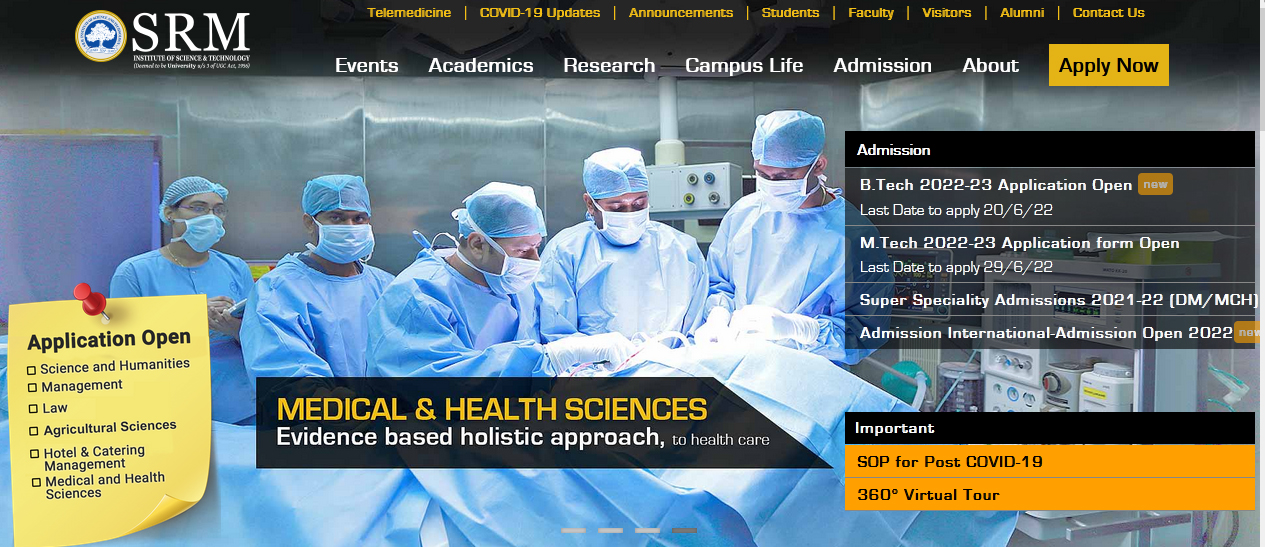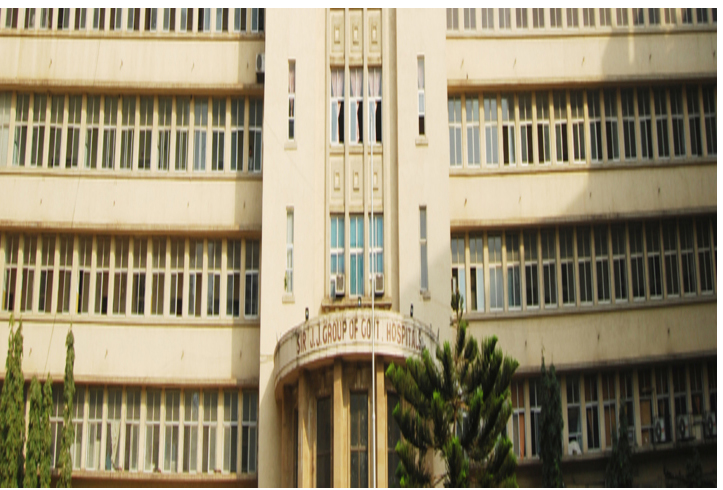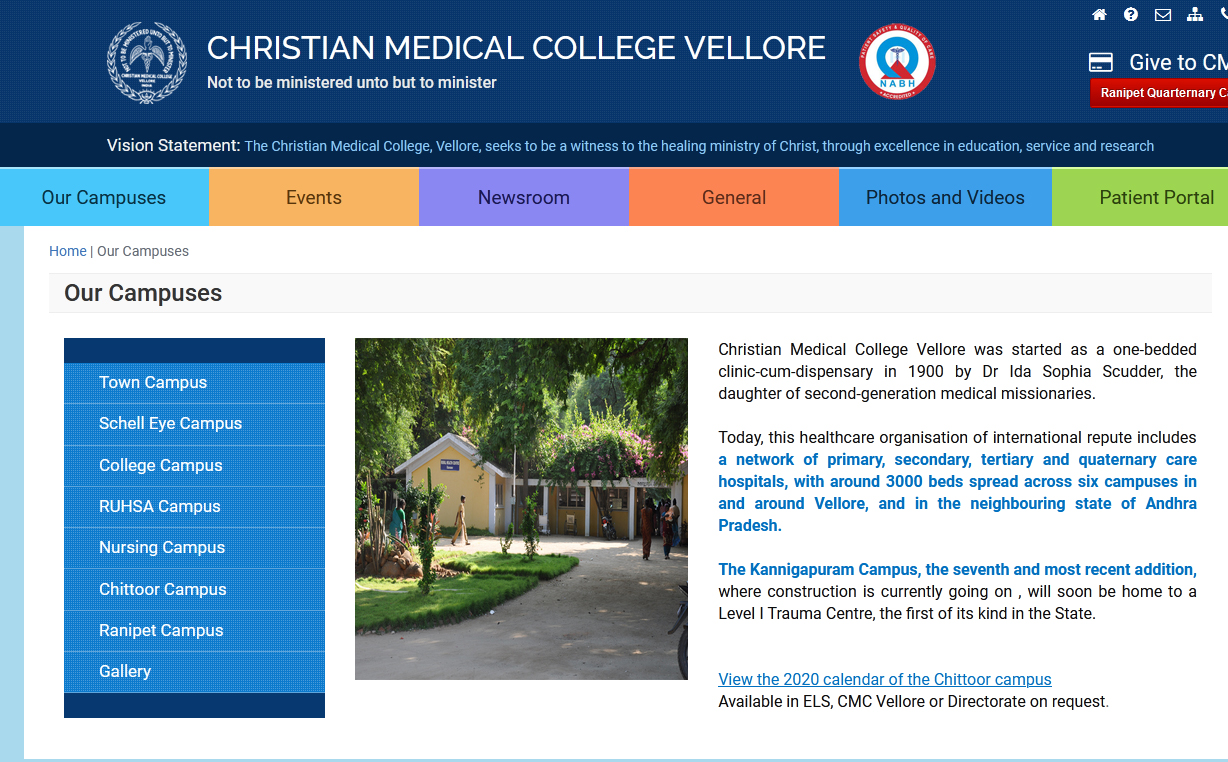SRM Medical College Hospital & Research Centre, Kancheepuram

- Read more about SRM Medical College Hospital & Research Centre, Kancheepuram
- Log in to post comments
- 28 views




The Government Medical College, Thiruvananthapuram (also known as Thiruvananthapuram Medical College) is in Thiruvananthapuram (the capital of Kerala), India. Founded in 1951, it was dedicated by Prime Minister Jawaharlal Nehru and is Kerala's oldest medical college. The college was known in early records as Medical College (of Thiruvananthapuram), since it was the only medical institute in the state at its inception.

The General Public are CAUTIONED not to be lured by any person offering admission to any of the courses conducted by CMC. The college will not be responsible for any candidates or parents dealing with such person / persons.
Civil and a criminal court proceeding will be taken up against any person who holds out promises and also uses the institution’s intellectual properties.
PLEASE NOTE: WE DO NOT ADMIT STUDENTS THROUGH AGENTS OR AGENCIES.
CMC Vellore Administration

Way back in 1707, the first hospital in Calcutta was built in the premises of the Old Fort at Gerstein Place. The Council of Fort William constructed this hospital. This hospital, initially built for the Europeans, was then known as Presidency Hospital. The hospital was accommodated in a single storied building. Later, in 1768, two houses were purchased in Lower Circular Road for converting them into a full fledged hospital. Located near the Presidency Jail, the hospital came to be known as Presidency General Hospital. Doors were opened to the non-European patients from 2nd April 1770.

Chettinad Academy of Research and Education (CARE) was conferred the status of Deemed to be University u/s 3 of the UGC Act 1956 in the year 2008 and since then, it has been contributing significantly to the society as an Institute for higher learning and research in the field of Medicine, Allied Health Sciences and Nursing.

During 1803, at height of its rule in India, the British India Company (East India Company) had a private army of 260000, twice the size of British Army. Plenty of soldiers used to die, mainly from diarrheal diseases, malaria and kala azar. The only available treatment at that time was traditional Indian medicine. It was not possible to treat this vast number of soldiers with very limited European doctors. Necessity of imparting training to the native people in modern medicine was badly felt.


The Hyderabad Medical School which came into existence in 1846 A.D. was the fore-runner of Osmania Medical College. The medium of instruction was Urdu, the degree was Hakeem. Last two decades of the nineteenth century was the glorious period of this school. Seventh and the last Nizam of Hyderabad Nawab Mir Osman Ali Khan established Osmania University in 1919 A.D. and in the following year the Hyderabad Medical College. In 1957 A.D. Hyderabad became the Capital of enlarged Andhra Pradesh. Tremendous zeal and enthusiasm were evident to achieve all-round progress in medical education.